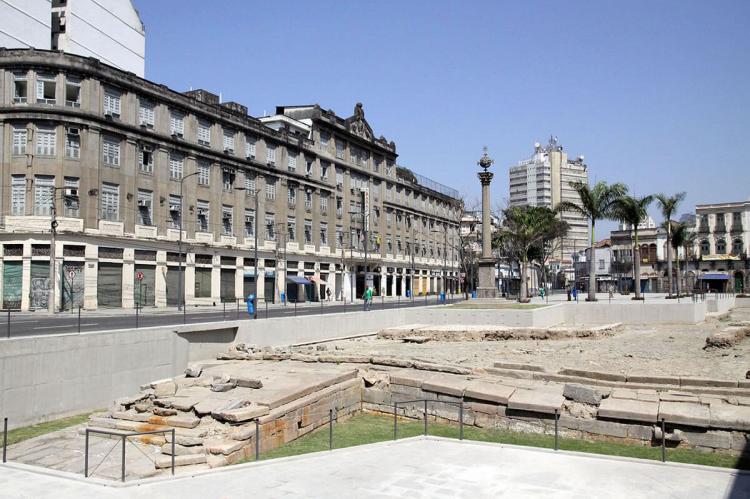Valongo Wharf Archaeological Site (Brazil)
The Valongo Wharf Archaeological Site encompasses the entirety of Jornal do Comércio Square. It is in the former harbor area of Rio de Janeiro where the old stone pier was built to land enslaved Africans reaching the South American continent from 1811 onward.
Valongo Wharf Archaeological Site
The Valongo Wharf is an old dock between the current Coelho e Castro and Sacadura Cabral streets in Rio de Janeiro's port area. The pier was built in 1811 and was the site of the landing and trading of enslaved Africans brought to the Americas.
It is estimated that over one million Africans were forcibly brought to Brazil through the Valongo Wharf, accounting for nearly 40% of all Africans transported across the Atlantic.
Brazil received approximately 4,900,000 enslaved people through the Atlantic trade until 1831 when the blockade of Africa banned the Atlantic slave trade to Brazil. However, clandestine trade continued until 1888. The transatlantic slave trade was a tragic chapter in human history, fueled by European colonial powers seeking to meet the demand for cheap labor in the Americas.
In 1843, the pier was renovated for the landing of Princess Teresa Cristina of Bourbon-Two Sicilies, who was to marry the emperor D. Pedro II. The wharf was then called Cais da Imperatriz (Empress Wharf).
Between 1850 and 1920, the area around the old pier became a space occupied by black slaves or freedmen of several nations, a place that Brazilian composer, singer, and painter Heitor dos Prazeres called Pequena África (Little Africa).
Rediscovered in 2011 during construction work for the Rio de Janeiro Olympic Games, the Valongo Wharf Archaeological Site emerged as an invaluable historical treasure. Archaeological excavations unearthed a wealth of artifacts and physical evidence that shed light on the horrors endured by enslaved Africans.
World Heritage Site
Recognized as a UNESCO World Heritage Site in 2017, the Valongo Wharf Archaeological Site is located in central Rio de Janeiro and encompasses the entirety of Jornal do Comércio Square.
The site comprises the preserved remains of the wharf, cobblestone streets, and structures where enslaved Africans were held upon arrival. Archaeologists have discovered shackles, ceramics, personal items, and human remains that serve as tangible links to the past.
In physical terms, the property consists of several archaeological layers. The lowest of these represents the remains of the Valongo Wharf. Later, more dominant layers relate to the Empress' Wharf, constructed in 1843.
In addition to the wharf, the site includes remnants of the Pretos Novos Cemetery, part of the so-called Valongo Garden, built in an expansive urban reform of Rio de Janeiro in the first decade of the 20th century, as well as the Pedra do Sal, a symbolic location considered the birthplace of samba, a Brazilian music genre and rhythm of African origins.
The Valongo Wharf Archaeological Site is a poignant testament to the horrors of the transatlantic slave trade and a dark part of Brazil's history. It provides an opportunity for reflection, remembrance, and education about the legacy of slavery in the country.
